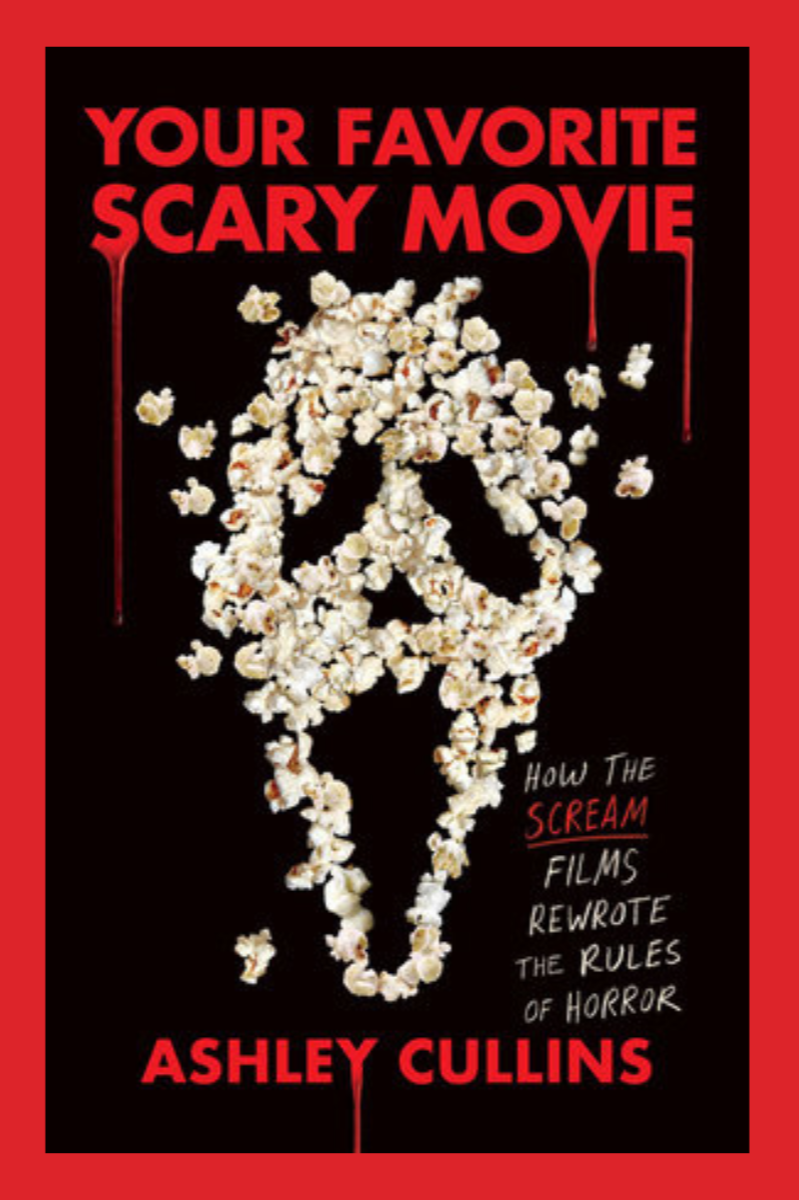Your Favorite Scary Movie: How the Scream Films Rewrote the Rules of Horror – Ashley Cullins
I’ve always measured my life in movies, and “Scream” is one of the three that shaped me.
“Jurassic Park” showed me the power of cinema, and remains one of the best film adaptations ever. “Drop Dead Gorgeous” taught me that dark, deadpan humor beats broad, slapstick comedy. But “Scream” cracked something open in me.
I saw the first three films four times each in theaters, plastered my walls with clippings and posters, perfected my Ghostface voice for prank calls and wore the mask for five consecutive Halloweens.
My parents worried I was too obsessed with a violent film, but it wasn’t the blood I loved — it was the craft. “Scream” was meticulously written, shot, scored and acted at a time when horror felt stale. For a shy high school freshman, it was a bridge into conversations, into making my own snow-day slasher films with friends and into a senior term paper on the cultural impact of Wes Craven.
That’s why Ashley Cullins’s “Your Favorite Scary Movie: How the Scream Films Rewrote the Rules of Horror” felt tailor-made for me. Cullins is a fan too, and while this isn’t a pure oral history, it reads like one – built from dozens of new interviews with cast, crew and filmmakers.
Neve Campbell, Kevin Williamson, Julie Plec, Cathy Conrad, Patrick Lussier, Greg Nicotero, Matthew Lillard, Jamie Kennedy, Rose McGowan, Courteney Cox, David Arquette, Skeet Ulrich, Heather Matarazzo, Sarah Michelle Gellar, Scott Foley, Parker Posey, Emily Mortimer — even Meryl Streep — chime in, joined by genre legends like John Carpenter and Eli Roth to dissect what makes the series so enduring.
The audiobook adds another dimension. Roger L. Jackson — Ghostface himself — narrates by opening each chapter as Ghostface before slipping into his natural cadence, even imitating Craven, Williamson and others with affection. It’s funny, eerie and meta in equal measure, and the perfect execution for a franchise built on self-awareness.
Cullins is at her best where fandom usually gets reductive. She reframes “Scream 3” as sharper than its reputation — Craven deliberately skewering Hollywood’s predatory culture with a film produced by the Weinsteins — and positions “Scream 4” as ahead of its time, satirizing clout-chasing before Instagram even existed.
She also shows just how much the Weinsteins’ toxicity warped the production cycles, and how Craven’s steady hand kept the franchise together. The chapter that eulogizes Craven adds warmth and emotion to the book as cast and crew remember a man who dabbled in the macabre but always led with kindness.
For the trivia-hungry, here are some of the gems that stuck with me:
Williamson drew inspiration not just from true crime (Gainesville Ripper and Leopold and Loeb) but also from Stephen Sondheim’s “Into the Woods.”
Julie Plec, then Craven’s assistant, convinced him to direct “Scream” and discovered Marco Beltrami, who scored his first major film here.
Drew Barrymore asked to play Casey instead of Sidney, reshaping horror iconography in one move.
The film that almost was: Alicia Witt (Sidney), Brooke Shields (Gale), Vince Vaughn or James Marsden (Billy). Lillard and Kennedy, meanwhile, were hired on the spot.
Greg Nicotero, later of “The Walking Dead,” was the special effects supervisor responsible for Casey Becker’s haunting tree scene.
The “Scream 2” police-car escape was originally written for “I Know What You Did Last Summer.”
Danny Elfman’s eerie “Cassandra” chorus, purchased for $1M and two premiere tickets, was Craven’s trick to sonically destabilize the play sequence.
Ehren Krueger only had two weeks to draft “Scream 3” before being pulled; Laeta Kalogridis helped Craven finish, uncredited.
The “Scream 3” mansion is the same building used as Hillcrest Academy in “Halloween H20.”
Craven let long-standing actors decide how their characters evolved, a reflection of his collaborative style.
Marley Shelton, who played Deputy Judy, also auditioned as Tatum.
Hayden Panettiere’s “Scream 4” contract barred her from dying, ensuring Kirby’s eventual return in “Scream 6.”
Craven gamed the MPAA by submitting over-gory cuts, then dialing back to the versions he wanted.
Williamson originally sketched a new trilogy with “Scream 4”: Jill revels in her “last girl” fame (5) but another killer emerges; Sidney finally gets her send-off (6).
Parker Posey and Elise Neal both tease their characters might still be alive.
Emily Mortimer’s real-life tie to Posey (her son Sam Nivola played Posey’s son in “The White Lotus”) is one of those only-in-Scream meta connections that begs to be folded back into the franchise. He needs to be in “Scream 7” to bring things full circle.
Even Mark Irwin, the DP Craven fired on “Scream,” remembered him fondly: “Wes Craven was a friend; he stabbed me in the front.”
By the time Cullins turns to the recent reboots, my investment dipped — not because she failed to keep me entertained, but because my canon ends with Craven and Williamson.
Still, her coverage of queer storylines, new creative voices and the “Scream 7” turmoil (Campbell’s perspective, Williamson’s frustrations and Christopher Landon’s short-lived stint as would-be first queer director) keeps the story grounded in the present and still relevant.
All that to say “Your Favorite Scary Movie” isn’t for casual viewers. It’s for the obsessives who can still quote Randy’s rules, who know the opening kitchen scene beat for beat and who once wondered if their fandom was too much.
Cullins validates that passion and proves “Scream” didn’t just terrify a generation — it rewrote the genre’s DNA.
Rating (story): 4/5 stars
Rating (narration): 4/5 stars
Format: Audiobook (personal library)
Dates read: August 22 – August 24, 2025
Multi-tasking: Good to go, but you want to focus on tasks that allow you to still pay attention or you’ll miss some of the fun insights.





